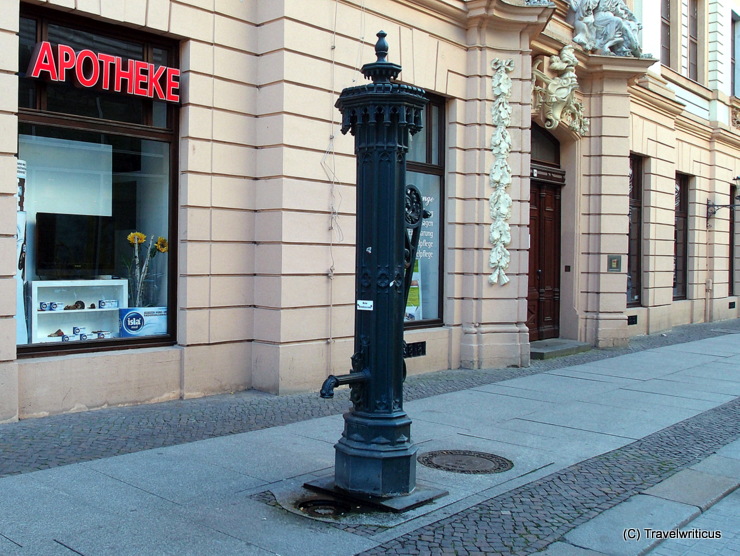
Classic hand water pump seen in the streets of Leipzig.
You only see what you know (Goethe)

Classic hand water pump seen in the streets of Leipzig.
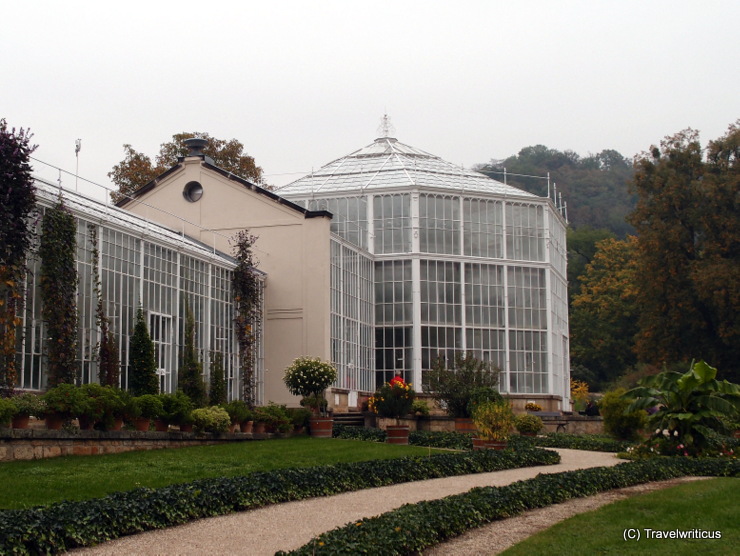
The palm house on the grounds of Pillnitz Palace (Schloss Pillnitz) was opened in 1861 and is considered as one of the oldest still existing constructions of cast steel and glass in Europe.
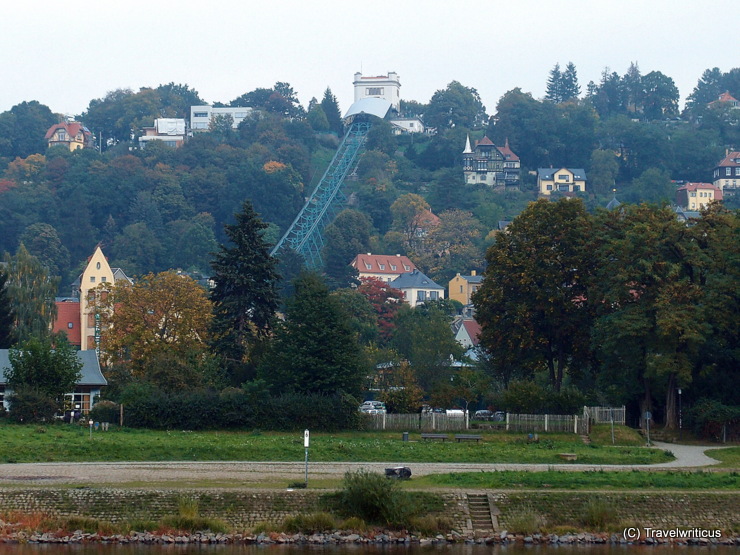
View of the suspension railway connecting the districs of Loschwitz and Oberloschwitz in Dresden. The pic was taken from a passing paddle steamer driving along the river Elbe. The pecularity of this suspension railway (Schwebebahn) is the fact that it is cable-drawn like a funicular railway.
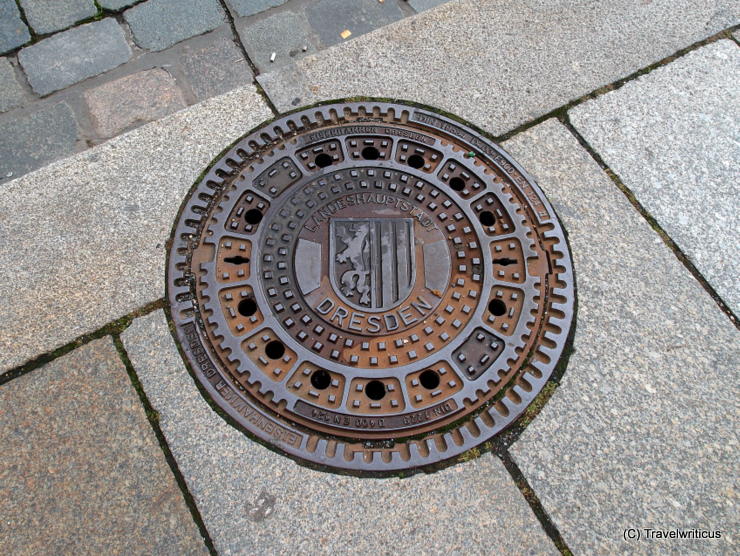
The manhole covers in Dresden display the city arms of the city. The lion represents the Margraviate of Meissen and the poles called the Landsberger Pfähle refer to the March of Landsberg.
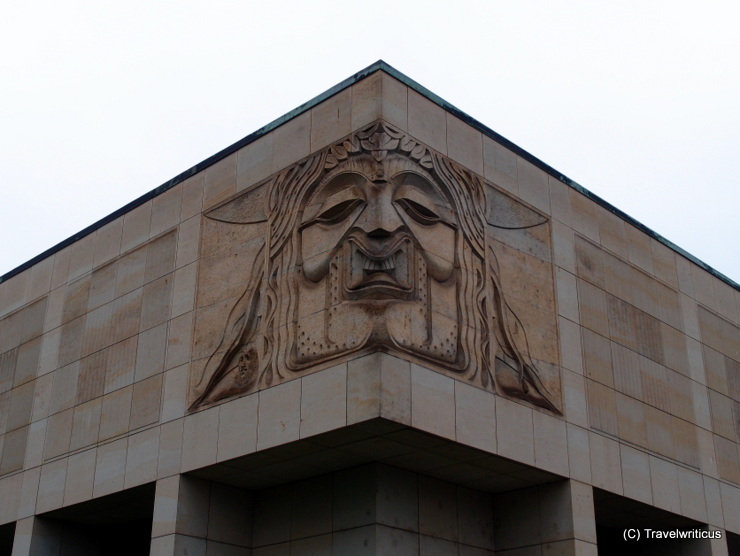
This is one of four sandstone masks created by Peter Makolies in the years 1982/84 They are decorating the corners of the administration building of the Saxon State Opera generally known as the Semperoper.

The first railway station building in Erfurt was in operation from 1846 – 1890. Today, the tower is still in use as a public clock, but the main building hosts offices of the German Railways now.
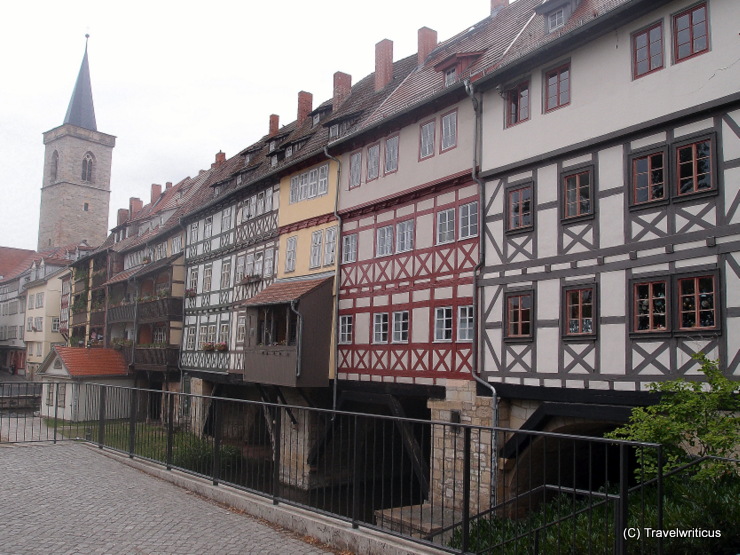
The Krämerbrücke is a bridge covered with 32 inhabited, half-timbered buildings. Most of these buildings house artisans and antique shops. In building N° 31, a permanent exposition informs about the past and present of the Krämerbrücke.

The Colleqium Maius was used as main building of the Universität of Erfurt in the years 1392-1816. The windows depicted above were built in 1511/13. Nowadays they are part of a reconstruction as the original building was destroyed at the end of World War II.
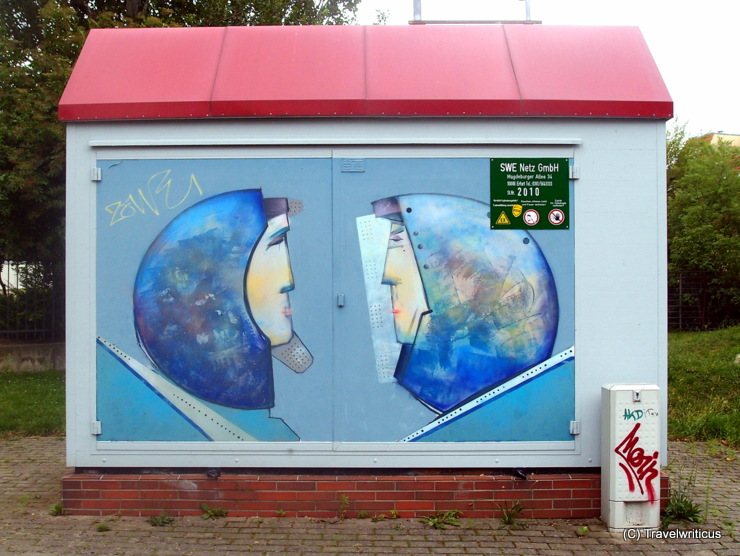
Street art seen at a station of the local power supply company near the old city wall of Erfurt. I suppose these two guys are astronauts or – speaking in terms of East Europe – cosmonauts. It happens to be I came across more than one time such depictions of cosmonauts in Erfurt.

This pic show the remains of the oldest city wall (11th century) of Erfurt. The depicted wall, generally known as Innere Johannesmauer, had been demolished in 1875. Red and blue street name signs still give a hint which streets were inside or outside the city walls in earlier times.

The Comthurhof was errected in 16th century in the style of Renaissance and was owned by the Teutonic Order. Today it houses flats and offices.
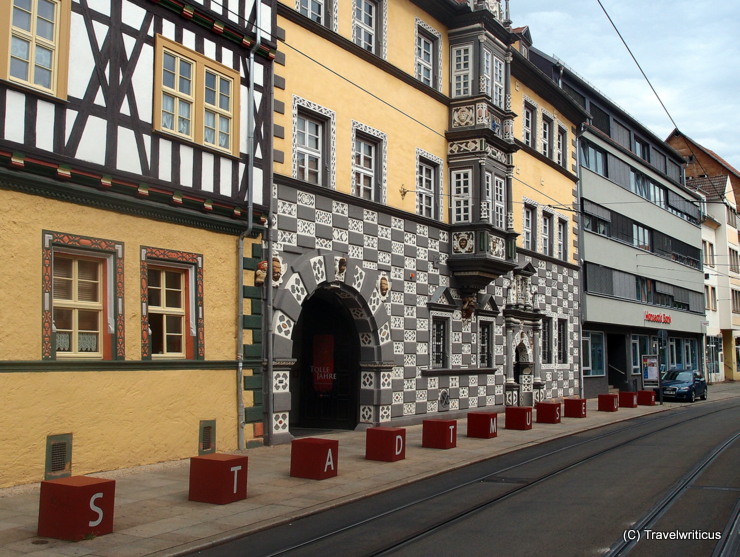
The municipal museum (Stadtmuseum) of Erfurt is placed inside a 17th century Renaissance building. The present-day function of the building is indicated by eleven red cubes showing the letters S T A D T M U S E U M. At the portal of the edifice there is a nice house sign featuring a stockfish.